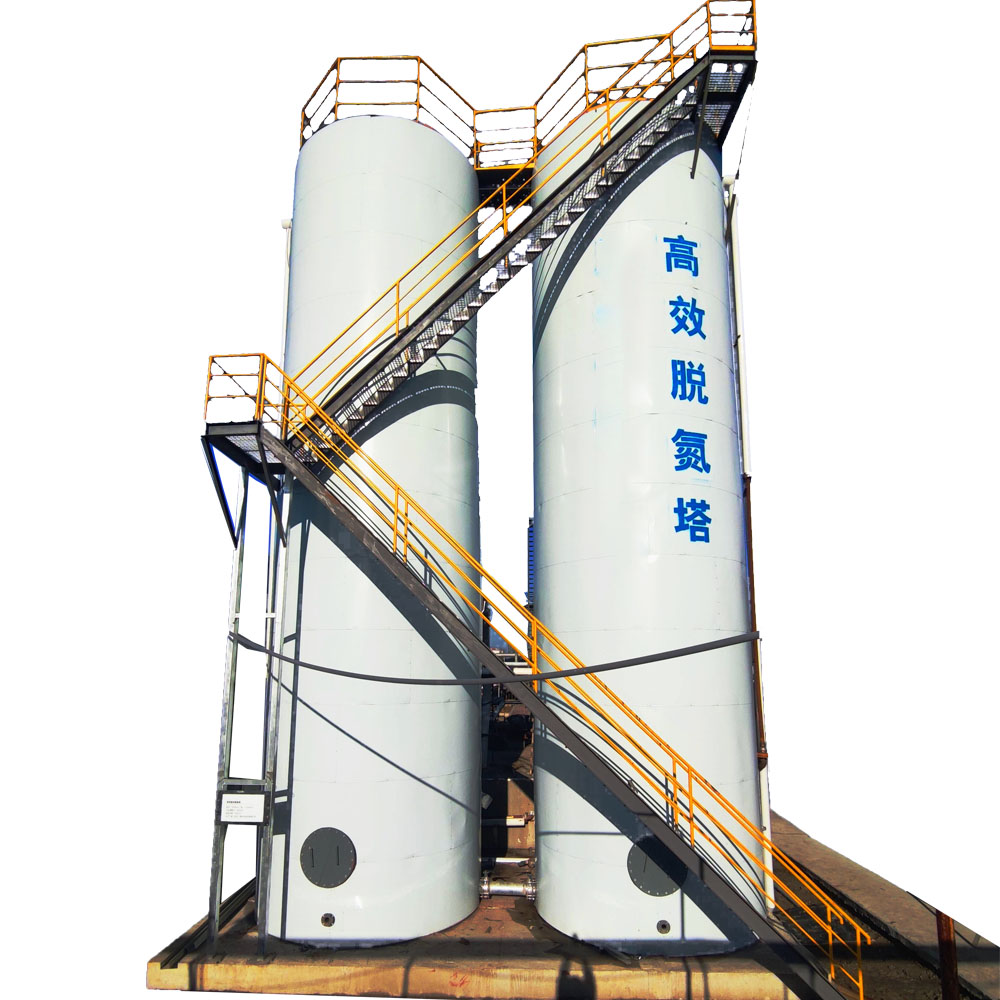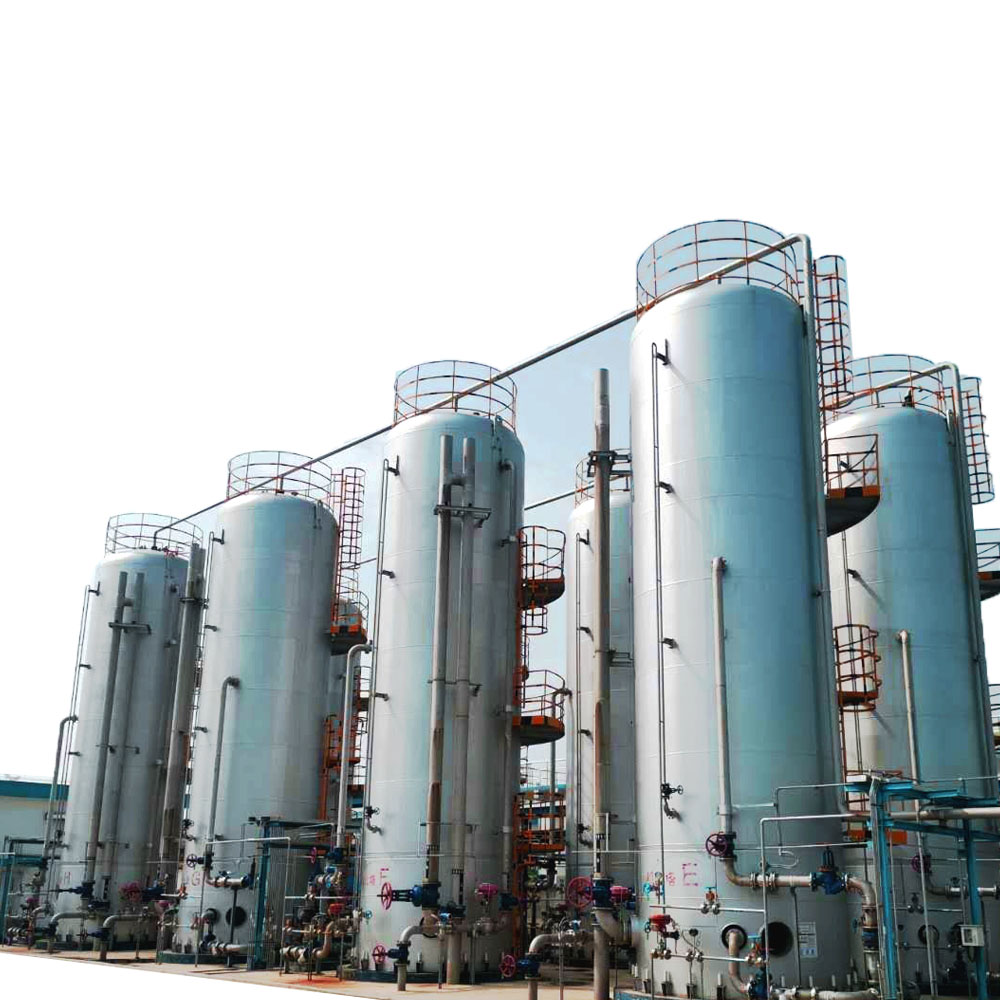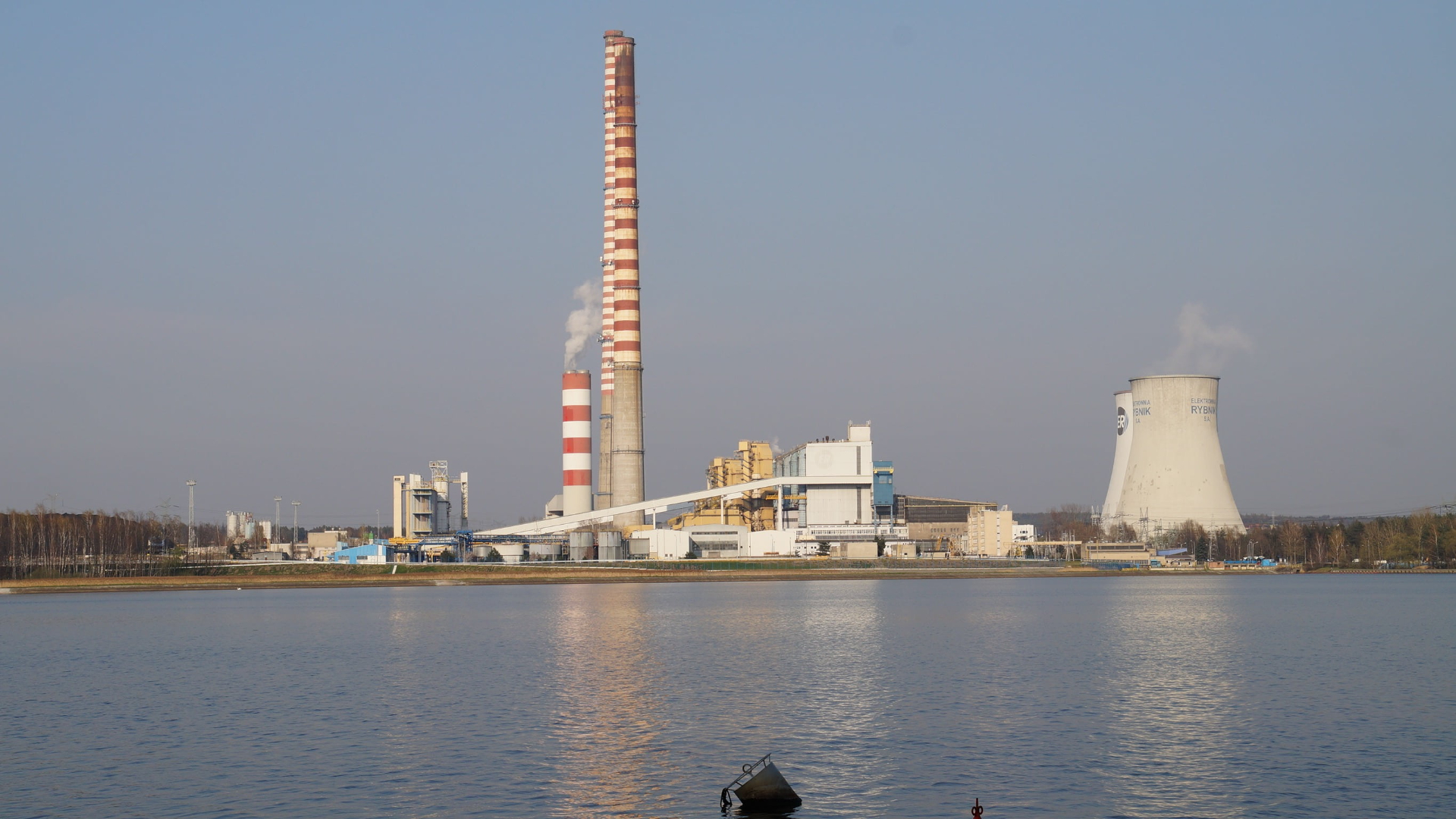- Basic principles and reaction mechanisms
Fenton advanced oxidation technology uses the synergistic effect of hydrogen peroxide (H₂O₂) and ferrous ions (Fe²⁺) to generate hydroxyl radicals (·OH) with extremely strong oxidizing properties. Its oxidation potential is as high as 2.73V (at pH=4), second only to hydrofluoric acid. The core reaction equation is as follows:
Chain reaction starts: H₂O₂ + Fe²⁺ → Fe³⁺ + OH⁻ + ·OH
Free radical oxidation: RH + ·OH → R· + H₂OR· + O₂ → ROO· → CO₂ + H₂O
Iron ion cycle: Fe³⁺ + H₂O₂ → Fe²⁺ + HO₂· + H⁺Through the above cycle, Fe²⁺ acts as a catalyst to continuously activate H₂O₂, achieving efficient mineralization of organic pollutants (converted into CO₂, H₂O and inorganic salts).
- Technical advantages
Highly efficient degradation of difficult-to-degrade organic matter: It has non-selective oxidation ability for highly stable pollutants such as aromatic compounds (such as phenols, chlorobenzenes) and polychlorinated biphenyls.
Easy to operate: no UV light or high temperature conditions are required, and rapid reaction (0.5-2 hours) can be achieved at room temperature, saving space and energy consumption. Environmentally friendly: avoids the generation of secondary pollutants such as chlorinated organic matter, and the sludge can be recycled as an iron salt resource after treatment.
Controllable cost: The initial investment is only 1/3-1/4 of that of traditional biological treatment, suitable for small and medium-sized enterprises.
- Key influencing factors and optimization strategies
| factor | Impact Mechanism | Optimization suggestions |
| pH | When pH < 3, Fe²⁺ oxidation is limited, and when pH > 5, the efficiency of OH generation decreases. | Adjust pH to 2.5-4.5 (optimal 3.0) |
| H₂O₂ Dosage | Excessive addition leads to self-quenching of free radicals, while insufficient addition leads to incomplete degradation. | Determined by COD/H₂O₂ molar ratio experiment usually (1:1-3) |
| Fe²⁺ concentration | Too low will result in low catalytic efficiency, too high will increase the amount of sludge | Maintain [Fe²⁺]:[H₂O₂]=1:10-20 (mass ratio) |
| temperature | For every 10°C increase, the reaction rate increases by 2-3 times | Recommended operating temperature: 20-30℃ |
| Reaction time | It usually takes 20-40 minutes to reach the peak value. If it takes too long, it will lead to the accumulation of by-products. | Dynamic monitoring of ORP value to control reaction endpoint |
- Challenges and Improved Technologies
Pain points of traditional Fenton method:
Large amount of sludge: Fe(OH)₃ precipitates are difficult to settle, increasing disposal costs.
Waste of reagents: After the COD removal rate reaches 50%-70%, the utilization rate of H2O2 decreases significantly.
Color remixing: Fe³⁺ is not completely precipitated, resulting in yellow-brown water.
Improvement direction:
Fluidized bed-Fenton method: Silica sand crystallization nuclei are used to induce Fe(OH)₃ to form stable crystals (particle size 1-2mm), reducing the amount of sludge by 70% and improving the utilization rate of H₂O₂.
Electro-Fenton technology: Combined with electrochemical oxidation, it generates Fe²⁺/Fe³⁺ cycles in situ and reduces the dosage of reagents.
Photocatalytic Fenton: UV light enhances OH generation and reduces H₂O₂ demand.
- Key points of engineering application
The order of adding reagents: acidification first (pH≈2.5) → adding Fe²⁺ (after 15 minutes) → adding H₂O₂ → adjusting the pH to neutral → flocculation and precipitation.
Influent water quality requirements: SS <200mg/L, avoid interfering substances such as sulfide ions and cyanide, and the Cl⁻ concentration tolerance threshold needs to be determined through experiments.
Sludge treatment: Use PAM (polyacrylamide) to enhance flocculation, or add lime to adjust pH to promote iron sludge sedimentation.
Corrosion protection: Equipment should be made of corrosion-resistant materials (such as FRP, HDPE), and hydrogen peroxide storage tanks and pipelines should be inspected regularly.




生化膜反应器14-scaled.jpg)
生化膜反应器4-scaled.jpg)


